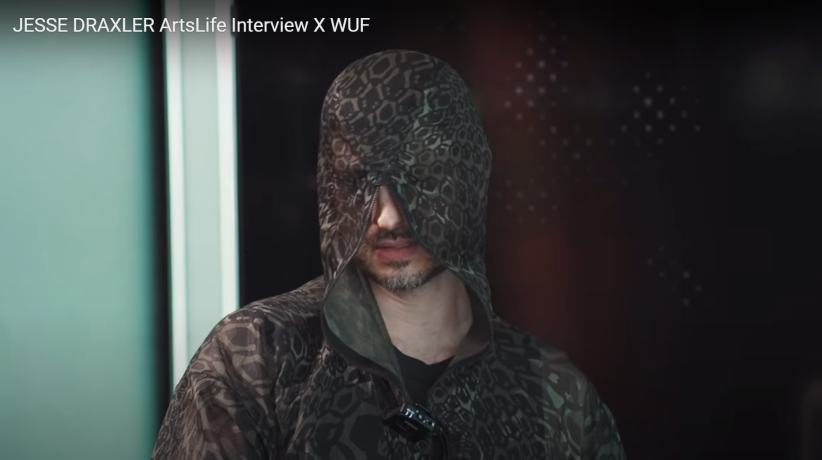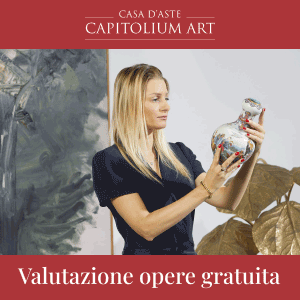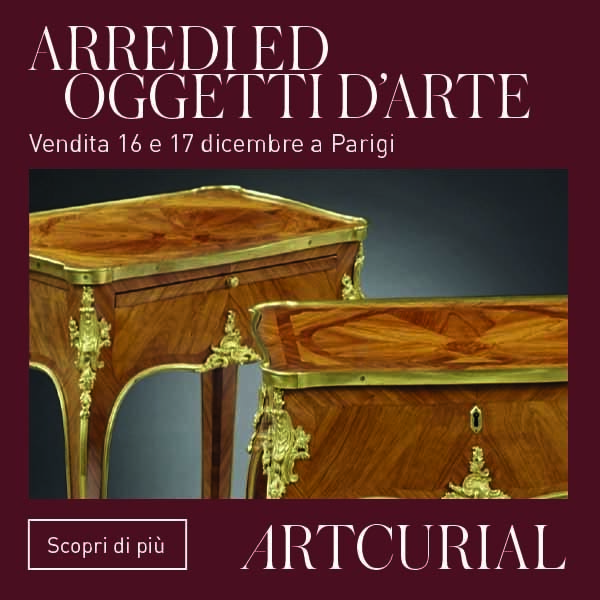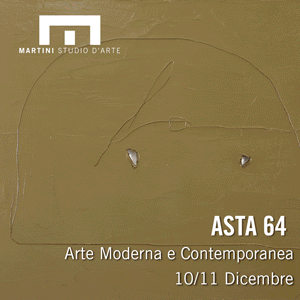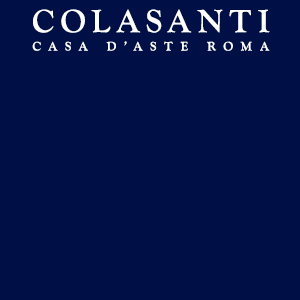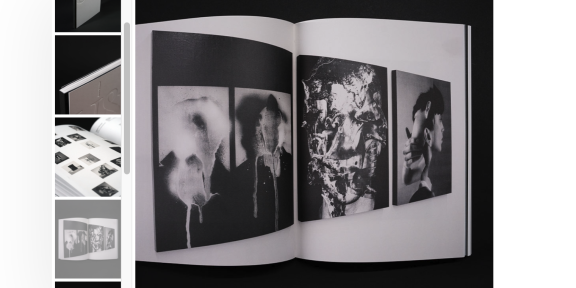Dedicata al mondo dell’arte WUF è pensata come un dispositivo contemporaneo di connessione tra giornalisti e protagonisti dello scenario artistico e ha debuttato con uno speciale appuntamento e due intense giornate di attività martedì 11 e mercoledì 12 giugno 2024. La nuova organizzazione WUF (We Understand the Future) è dedicata a connettere voci creative e valorizzare progetti artistici emergenti attraverso un approccio guidato dall’arte e dalla tecnologia. L’edizione inaugurale prende vita con un evento esclusivo per la stampa realizzato negli spazi dell’iconico Bar Rouge, con la partnership di ArtsLife e de La Lettura de Il Corriere della Sera.
La parola ai protagonisti: JESSE DRAXLER
“We’re versatile, man. We’re agile, we can do anything”
Hi, what’s going on?
Oh yeah, very fine, very fine. We’re in a beautiful place in Basel.
Very exciting to be here with you, and I don’t know, I’m really curious to know what your practical approach is because I have followed you for many years, and it’s a pleasure to be with you. So you,What’s going on?
Well, like you said, we’re here in Basel. We’re right on top of Basel, actually, right down here. Have you been here before?
Yeah, yeah, I think four years ago. I just started working in the art world as a journalist, and I came here with my colleagues, and Basel is the best art fair in the world. I visited other fairs, but Art Basel is the best in the world. Of course
I haven’t checked it out yet. But I’ve been to Art Basel Miami, and that’s nowhere near as good, I hear, as the Basel fair. So I’m looking forward to seeing it.
Nothing beats Basel, right?
Jesse: Yeah, so many people in America think that Art Basel is like the one in Miami, like that’s Art Basel. So when I said I’m going to Art Basel, they’re like, isn’t that in November in Miami? Like no, there’s a city called Basel where the thing started,
But it’s not exactly the same as in Basel
But anyways, yeah, I came out here specifically to talk to you about the project that we’re launching and announcing here, as we have right behind us. As it says, we’re fully launching on September 4th, but RIP in general is a creative lab, I guess we can call it, started by me and my business partners as a venture to explore the intersection between music and art. It sounds cliché, but in a more deep, direct, meaningful way of bringing art and music together for a real collaboration, a real conversation between the two, not just a musician hiring an artist to do a cover and then forgetting about it, but actually world-building together from the very inception of a project where we want to listen to what an artist wants.
So visual art is connected with the musical side
In every way, not just the visuals on the cover, but the way that the album is rolled out, the world that is built around the album, that the fans can then live in. You know, it strengthens the bond between the listener and the musician, the fan and the artist so much. And it’s greatly overlooked. There’s a huge vacuum in the music industry when it comes to visual art, especially now that all music is streaming. Nobody has physical album covers anymore, no vinyl, no booklets, nobody’s reading liner notes anymore, the thank yous that used to be in there, all the extra photos, all that is lost. We have different sorts of content instead.
So we can say that you’re working on something that has a nostalgic side, but in another way, you’re doing it digitally, in a very innovative manner.
Yeah, I mean, we’re going forward. We’re going to be integrating blockchain into things as well, but we’re also going back, as you can see on this screen here, like an old school zine. So like a media arm of RIP will be this media arm called Off the RIP, where I conduct podcasts and also do media coverage of concerts, music events, art events, and stuff like that. But this, as an example, is a very old school representation of a handmade zine you just print off at a Kinko’s or something. I’m making these myself by hand. So yes, this has a very nostalgic feel. The idea of reading the liner notes on an album is a nostalgic concept, but we’re not looking to just bring back the past. We want to see what’s possible with that same kind of modus operandi of what they were trying to do by that, but in a new future context. So it’s really exciting to be here and announce it at Basel, of course, the biggest art fair in the world. So it’s a really important time.
It’s the right place.
Absolutely, yeah.
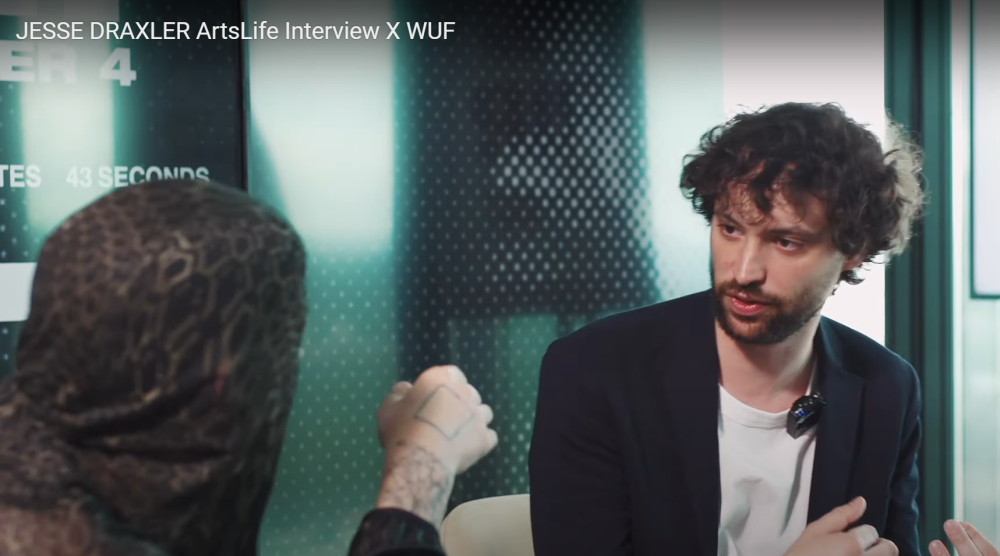
Wow, and so do you collaborate with a lot of musical artists?
Absolutely, yeah. I’ve always collaborated with a lot of musicians since the beginning of my career. My actual love of art started as a love of album covers.
Oh, album covers.
Like, I grew up in a very small town, middle of nowhere, not a city around that had a museum. There was no fine art, there was no fine painting. Nobody really appreciated that in a small farming community. You know, 900 people at the time I was living there,
It’s been a long path.
It’s been a very long path and I kind of forgot where I was going with that. Why was I talking about where the f*** I’m from? Oh my…
So it was a necessity for you. Like, starting as a visual artist..
My only outlet or the only things I saw that were representative of art were on the covers of albums, in magazines, stuff like that. I wasn’t familiar with the fine art world, so I grew up in the early stages of my life, my early teens, saying I wanted to grow up and make album covers. Like, that’s what I wanted to do, thinking that there’s probably a lot of money in it, you must be hugely famous if you’re on the cover. Then I found out later that there’s zero money in it, like most album covers are actually created by the record label themselves and the design studio and stuff like that. But my interest in this spans back that far. Man, I didn’t get any sleep last night, so I keep on losing my train of thought. So anytime you can help me out and remind me what the f**** we’re talking about, that would be great. But, so you mix with musicians working with music. I always worked with a lot of musicians. My love of art started with music. That’s why I was going in that direction. My love of art started with music. And I was really into music as a kid, more so than visual art. I just happened to be better at visual art. I wasn’t good at music.
Me neither, me neither.
You have to practice a lot, and the pressure of recitals and competitions came up where I just gave up. I quit. But because of my love of music and my natural proclivity towards visual art and not being happy just being a fan, a standby fan, I wanted to interact with the music, I wanted to participate. So I always was seeking out artists, finding musicians, I mean, you know, musical artists. I was always seeking them out, trying to speak with them, getting in touch with record labels even as a young child, like a 13, 14-year-old starting websites.
It was not easy to do in this world.
Well, actually, to be a little contradictory, it was actually super easy at first because it coincided with the internet, like the first wave of the internet. The internet just came out and I got the internet right away and was studying it a lot and figuring it out. I ended up learning HTML enough to make my own websites. I learned Photoshop so that I could make headers and designs for my websites, and then I used the websites to review music albums. I would find the emails to the record labels really easily back then, early internet. There were no scammers, no spam, no viruses. People trusted everything. I have a feeling that when I would write these record labels, they had no idea they were talking to a 13-year-old in the middle of nowhere in a very small town, but I was able to get through to these people very easily because it was the very beginning of the internet. I bet they weren’t even getting many emails at that point, so they got an email from somebody who had a website, and they were probably like, “Wow, this is legit,” back then. So I was getting tons of free CDs in the mail, just like mailboxes full of free CDs because I was like, “I review CDs, if you send them to me, I’ll review them.” It was my way of getting tons and tons of music, so it was relatively easy at that point. Later on in life, my love of music brought me multiple places along the way. I hosted a radio show for the local college station when I was only like 16 years old and stuff like that, but then later in life, growing up in my 20s, I started going to an art college and getting more serious with my art practice. But then after that, I mean, even while I was in art school, all my friends were musicians, like all of them. I didn’t have any friends that went to the same school as mine. They all went to the music school, so I was surrounded by music. But once I got out of college, my main clients were record labels, bands, those kinds of things. So I’ve ended up doing quite a few major record covers, or I guess not major, but like important, I guess you could say, album covers, and got some notoriety for that. And that is part of what leads us into RIP because I have a lot of industry connections. I have a lot of friends in bands. We’re already speaking with new bands or bands that are coming to us wanting to release albums with us, like original content with us already. And that’s all just because of the connections I’ve made through the record industry.
In your career, you worked for a lot of artists. Are you able to quantify this amount? I don’t know with…
Oh, like how many covers? That’s a good question, actually. I really should do that. I’ve been meaning to do that, actually. I don’t know how many album covers, it might be impossible because there was a time, you know, when I was in my early 20s, maybe late teens, where I was just doing covers for all my friends, just anything for free. So who knows how many are out there then.
Maybe talking about
When it became serious was really like I did an album cover for Prince, and that was the first very serious album cover that I did. And then after that, I was able to do covers for musicians who are big within certain…
And did you get to work with Prince?
Yeah, with Prince. So I was living in Minneapolis, Minnesota at the time, and that’s where Prince lives. That’s where Paisley Park is outside of Minneapolis. I became friends with this girl who happened to be his photographer. She would take him on tour, she would be around him all the time taking photos. He just wanted somebody always taking photos. She was on call for him at any time. He would call her up, and she had to go take photos. But I was friends with her, and through her, I guess she showed him my work, and then I got a call one day from his team saying, “Are you interested in doing…”
Incredible. I think it was an incredible moment when you saw this…
Well, it actually jump-started my career because at the time I was still a waiter in restaurants. I served in restaurants for 13 years after college, all the while practicing my art and working as little as possible with a flexible schedule that a server could have.
Yes, of course.
But that job with Prince is what allowed me to then quit the job because it paid well enough that I was able to…
Doing your style well.
Yeah, but I take it back. It didn’t pay well enough that I should quit my job. I was young and foolish and was like, “This is tons of money, I’m going to quit my job and move to California.” And that’s what I did. I quit my job and moved to California. But by the time I got to California, I was broke again, but it got me there. So it’s genuinely the funds from Prince. He never knew it in his lifetime, but I’m grateful to him because without him I wouldn’t have been able to do… I wouldn’t probably… I might still be here, but it might have just taken longer, you know what I mean?
Okay, okay. Well, wow. And now that you are here, which artists have you collaborated with?
Ah yes, let me explain what we have here. So on these screens, on these first two screens, this was a conceptual project that kind of kickstarted the idea of what this label could be. To do that, we came up with a project or a case study, I guess you could call it, where I picked eight albums that were super influential to me and that I have some connection to in some way from the past. They were already released, nothing to do with me, but I used my own artwork and redid the covers. So what we’re seeing here is Kendrick Lamar. So these are all albums that have already been released that I reimagined covers for.
Wow, and are these a collage or digital collage?
Everything I do is hand-done and then I bring it into digital and do some digital. So that’s actual painting and stuff like that.
What is his album?
That was Kendrick Lamar’s Good Kid, M.A.A.D City.
Oh yeah, of course.
The reason I did that was because that piece on the top was an illustration I did of Kendrick Lamar for the New York Times when that album came out. So it’s an actual connection.
Very cool
This is Sepultura, This is Ice Cube.
Ice Cube, yeah, of course. And Kendrick. Now on this screen, we have Slayer.
Do you like pop music or…?
I like all music. Yeah, I like hip-hop a lot, I like metal a lot, I like alternative.
I see Maybe.
Yeah, well, Slipknot is right there. So I redid a Slipknot cover, a Slayer cover. What else do we have? Pusha T, so that’s hip-hop again.
Yeah, I love Pusha T. But hip-hop and metal, I would say, are my two favorites. But this is a really good point. I try not to subscribe to just any one genre. That goes beyond just music, but I really challenge myself to go beyond my own taste even, to explore things that don’t seem like they’re for me. If something gets enough acclaim, or the right people are talking about it, or for some reason it seems to have a cultural value, I’ll force myself to listen to it to understand it. At the very least, if I don’t like it still, I want to understand why the culture likes it. So when it comes to music, I listen to everything. I’m listening to a lot of African jazz flute music in the mornings lately and stuff. I listen to noise music where it’s literally nothing but noise, and then hip-hop and metal, alternative, electronic, all of it. But I really do challenge myself to go outside of my own taste in order to..
Discover new feel
Exactly. And it’s all, you know, so I can just cannibalize it. So I can just take everything from it. It’s not, you know, it’s like there’s something there for me, I’m going to extract it from it, you know what I mean?
Yeah, yeah, yeah, of course.
And also, too, so that I’m relevant. It helps me stay super relevant so that no matter what, even if something’s not meant for me or I feel it’s not meant for me, when I’m having a conversation with somebody who it was meant for, I’m not out of a cultural dialogue or I can use a signifier from that subculture or genre in my own to have a conversation.
Wow. So you get to collaborate with artists you like and generate new things together. It’s a mix of energy that generates something new in some way. For instance, has something interesting happened during a project, like an artist surprised you during the work?
Not quite yet, but I’m excited for that to happen. I do want to release all kinds of music and support and embrace all kinds of genres, whether or not it’s my taste completely. And I do hope to be surprised along the way. We are talking with musicians already and legitimate bands. Nothing I can say on the record yet, but things that are very exciting and do go outside a little bit of the box, more experimental stuff. And I’m also working on my own album that I’m releasing on RIP.
Oh, wow. Tell us more about that.
Well, I shouldn’t say album because I’m unsure of the release strategy yet, but I already have released one album. I have one album, but it was a completely collaborative album.
So you are also a musician?
No, I roped musicians into doing this for me. I was a bicycle commuter for a long time in Los Angeles, which I know here it’s nothing to you guys. Everybody’s a bicycle commuter, but in Los Angeles it’s crazy, it’s insane. But I was always trying to make art while I was bicycling, so I was taking videos and photos or whatever, and I just got around to the point of wanting to gather all of the information from my surroundings somehow. I don’t even know why, and I just started recording sounds, noises, jackhammers, alarms, just noises. And I didn’t even know what I was doing. Once I amassed an amount of them, I had an idea to edit down and curate a group of sounds and then use that same group of sounds to send to a multitude of artists. I gave them a set of rules, and I said, “You can use these sounds, any of them, as many of them as you want, as little of them as you want, but you cannot use anything else to make the music. You can manipulate these sounds in any way you want, but it has to be only these sounds. You can’t add anything but vocals if you want.” So I got different musicians, all kinds of musicians. The album ended up having actual pop songs on it, like some musicians were able to turn that into pop music, some of it was straight noise. I had big names on it, like Ghostemane, but under his other name Eric Ghost, Chelsea Wolfe, Trentemøller, so some big names were on it. My second project, the one I’m working on now, is an extension of that, but it’s coming together a little differently because I’m being a little bit more loose and free with it. I already have tracks from one to three musicians now. I actually just got one in my email right before our conversation. I was listening to the newest track, and it’s awesome. It’s a band called Presser, super good. I already have one to three tracks from different artists. I have an EP that I collaborated on with a noise musician. We just need to figure out release strategies. Given the climate of how music is released these days, I think I want to try to play along with it a little bit and release a string of singles, maybe an EP, and then let them build up and release the album later on. But it’ll be a really fun project to work on with RIP at the launch and use it as another case study.

So they are releasing together or not?
We’re launching on September 4th, and at that point, we might already have some singles out, I don’t know, but we’ll definitely be releasing some physical goods. On September 4th, we’ll have some definitely t-shirts, we haven’t talked about the t-shirts yet. We’ll definitely have t-shirts, probably some vinyl. These zines that we’re seeing here will be on the website on September 4th.
RIP is composed of album vinyl, but also wearable stuff and a lot of things.
Exactly, and we haven’t touched on it yet, but I’ve worked a lot with the fashion industry over the last decade as well. Music and fashion have been the main things I would say. I’ve worked with Alexander McQueen, McQ which is the streetwear division or was the streetwear division of Alexander McQueen. But right here on the screen, we can talk about that collaboration I did with Julius that was just released. They released the imagery and stuff, but it’s actually part of the pre-spring 2025 collection, so it goes on sale in December. These pieces were with them, we just finished this collaboration. On the screen, you can see an example of one of my designs on a shirt.
Wow, fantastic.
So we’re going to be doing really high-end, high-quality t-shirts that are more like wearable art prints, because it’s really important that the art is the utmost quality on the shirt, and the shirts have to wear well. We’ll expand into other sorts of wearables in the future.
Wow, it’s a very multidisciplinary way to do art mixed media..
Media, well, and this is really bringing it all together. We covered a lot of things, you know. I do all these things and I’ve always done all these things. We realized we need to consolidate this in a way, and it’s really helped me think about my own practice too.
Challenging I thing?
Well, it’s challenging when you don’t have this organization, but now we have the organization and it’s easy for me to think about. I think about RIP as having four pillars. If I can remember them right now, I’ll tell you. It’s the reissues, which is the RIP reissues here that we’re seeing where existing albums are retrofitted with new contemporary art in an attempt to have the album seen in a different light. That’s one arm, and we’re already speaking with record labels to make these a reality. Then the second is Off the RIP, which is the media arm, the podcast, doing the interviews, the zine here as you see, going to festivals, doing media coverage, hopefully growing in the future. Then we have the original releases, which will be RIP Originals, like my album that we were talking about would be an original. Other bands that come and want to release new original material will be the RIP Originals. Then we have the wearable art, so the four pillars. Everything else that we do fits into one of those categories in some way.
Incredible. It’s a challenging project but really interesting.
We’ve been working for about a year and a half to get it down succinctly. I think my business partners probably had it down earlier than I did. It takes me a long time to get things consolidated because I think in such a nebula, everything’s just floating around freely in here, and then when it comes time to do stuff, I have to put it in places and it helps to have people along the way. That’s what makes the project strong, that we have all the elements in place for this really ambitious…
Do you think there are some artists that did something like that in the past?
That’s a great question.
Or do you think that you are trying to innovate?
I’m a trailblazer, I’m the first. No, it’s a really good question. I didn’t do research on whether a visual artist has ever started a record label or…
It’s really strange, particular.
Yeah, it’s a really… I don’t know. I’m sure artists have been parts of startups of record labels, but to have a record label, a whole creative label like this, that’s built around an artist, like this is built around me, it’s not like we’re just launching a record label and we have to figure out what it is. We know what this is because I’ve been doing it so long. I don’t know if there’s ever been a record label that is based around the art of a particular artist, but around the vision. I won’t say it’s based around my art because, like I was saying, we have other bands we’re speaking to where I won’t be involved in the art, and that’s fantastic, but it’s my vision at the end of the day. It’s a vision that I’ve been building all my life, like I was saying, since 13 years old starting those websites. To me, RIP started at 13.
So it’s a good goal.
Yes. Good, exactly
Wow, congratulations.
Thank you, dude. What’s your favorite music?
I listen to pop music, indie music. I don’t know if you know the genre.
Pop, throw me some band names or some musicians.
A band, a band I like? Do you know Alt-J? I really like this kind of music, but I have a lot of friends who definitely listen to hip-hop music, so all the artists you named…
Hip-hop became the pop music of the world.
Do you have a favorite album cover?
No, I’m really… Yeah, I don’t know because I started listening to music when CDs were not so spread. They are the new generation of streaming music, so I have to confess that…
I can gauge your age. I get it though, that makes sense. That kind of speaks exactly to what the [ __ ] we’re talking about right now. The fact that you’re like, “Oh, I started listening to music when it was streaming, so I don’t know album covers.” But I think that’s…
In this time…
Exactly, that’s what we’re doing. We’re going to fix all that. I want to make the artists that are working with the musicians as big as the musicians. They should be. I mean, most of the time, or it used to be, that you would see the album cover before you would hear any music. And they say first impressions are so important.
Yeah, I think so. In the history of art and music, there are a lot of situations where artists work with musicians for the cover. I think about Andy Warhol…I think most importantly…There’s a lot of examples. I think Ed Ruscha worked with Red Hot Chili Peppers
Richard Prince did Sonic Nurse by Sonic Youth.
That’s a great album cover. It’s actually just a great piece of art.
There is a history in this field about the connection between visual artists and music.
The thing about it, though, is that the musician has to really care for that to happen. The musician has to have that in mind almost from the beginning. In order for a collaboration like that to really work out, the record label or nobody else is ever going to be like, “Hey, you should work with this superstar artist. That’s going to be super expensive for us.” It’s going to be really difficult for us to get. They’re not going to do that. Most record labels are like, “You can work with our team. We have a design team, and one of those guys is going to make your album cover.” So what you’re talking about, those examples do exist, but they’re very few and far between. They used to be a lot more common, too. They used to be a lot more common.
Do you think your project can have an impact in the music field?
Absolutely. I think it’s going to have a big impact, especially after some of the conversations I’ve had with musicians that we’re speaking with. The last musicians I spoke with, I was directly asking what they didn’t like about their last record label, and it was a big record label too. All the things they brought up were all the reasons I’m starting this label. They ate it up, they loved it. They loved to hear that somebody wants to pay attention to all the details with them, the things they really care about and spend a lot of time thinking about, the details that get overlooked by corporate record labels and stuff. So I think we’re going to have a huge impact on the record label. I think a lot of bands are going to want to release with us once they see what we’re capable of and the way we’re rolling out the music we’re doing. I think we’re going to become a destination. I think we might get overwhelmed, bro.
I think that now that we are very close to Art Basel and I don’t know the visual artistic system in a strict way, I think that your project can have a lot of conceptual aspects that strictly link to the visual artist. It’s similar but different for the music industry, and maybe your research is a point of connection between these two worlds. The manner you work on music and the visual aspect of music is in a very conceptual way that I think can be spent not only in a commercial dimension but also in a strictly artistic way.
Absolutely. I actually viewed that first record I did as an art project. It just turned out good enough that it was like, “Wow, it’s on Spotify now and you can listen to it.” But to me, I didn’t know what I was even going to get. Exactly what you’re saying, I was expecting it to be an art project presented in a museum or something, on the speakers.
That can be exposed, talked about in the artistic system.
That is definitely something that we will explore in the future too, doing performances and all that kind of stuff, bringing musicians who normally wouldn’t be in museums into museums, bringing artists who wouldn’t normally be in the club into the club, stuff like that.
So it can be spent in a lot of situations.
We’re versatile, man. We’re agile. We can do anything. That’s a wrap. Thanks, y’all. Thank you very much.
Thank you, very…
Thanks, David.



